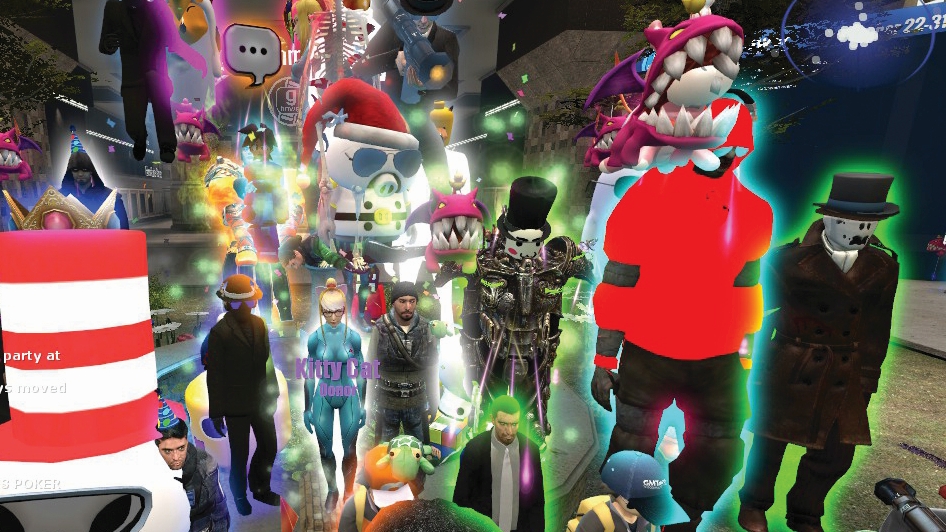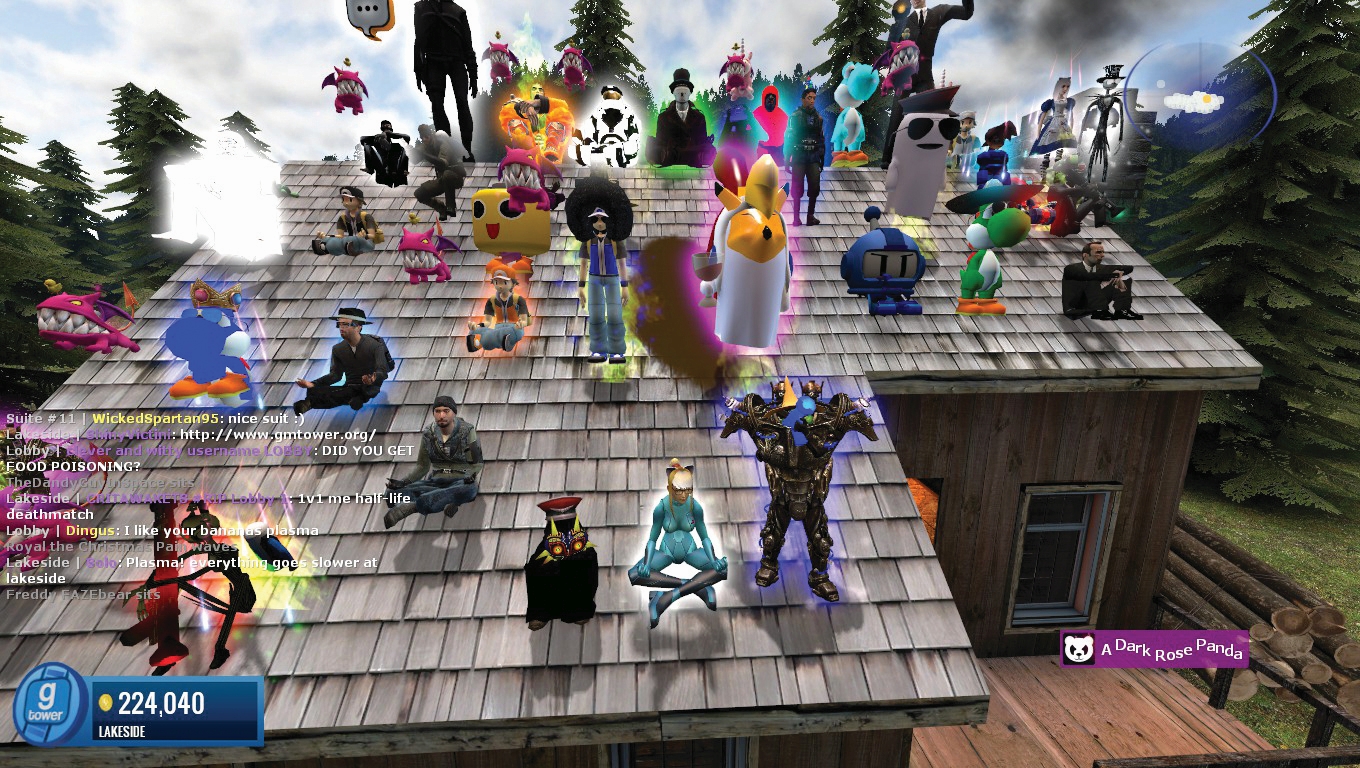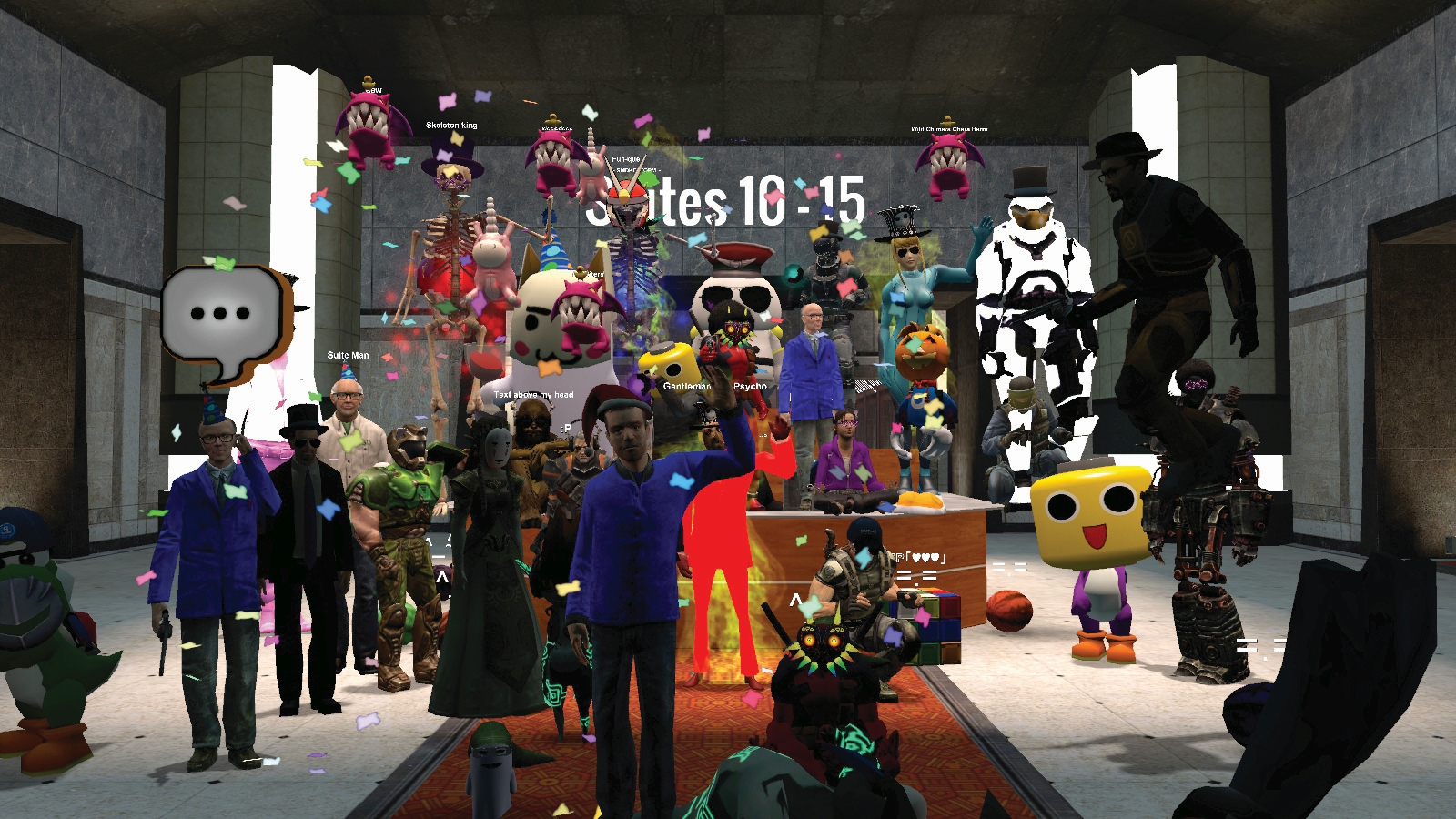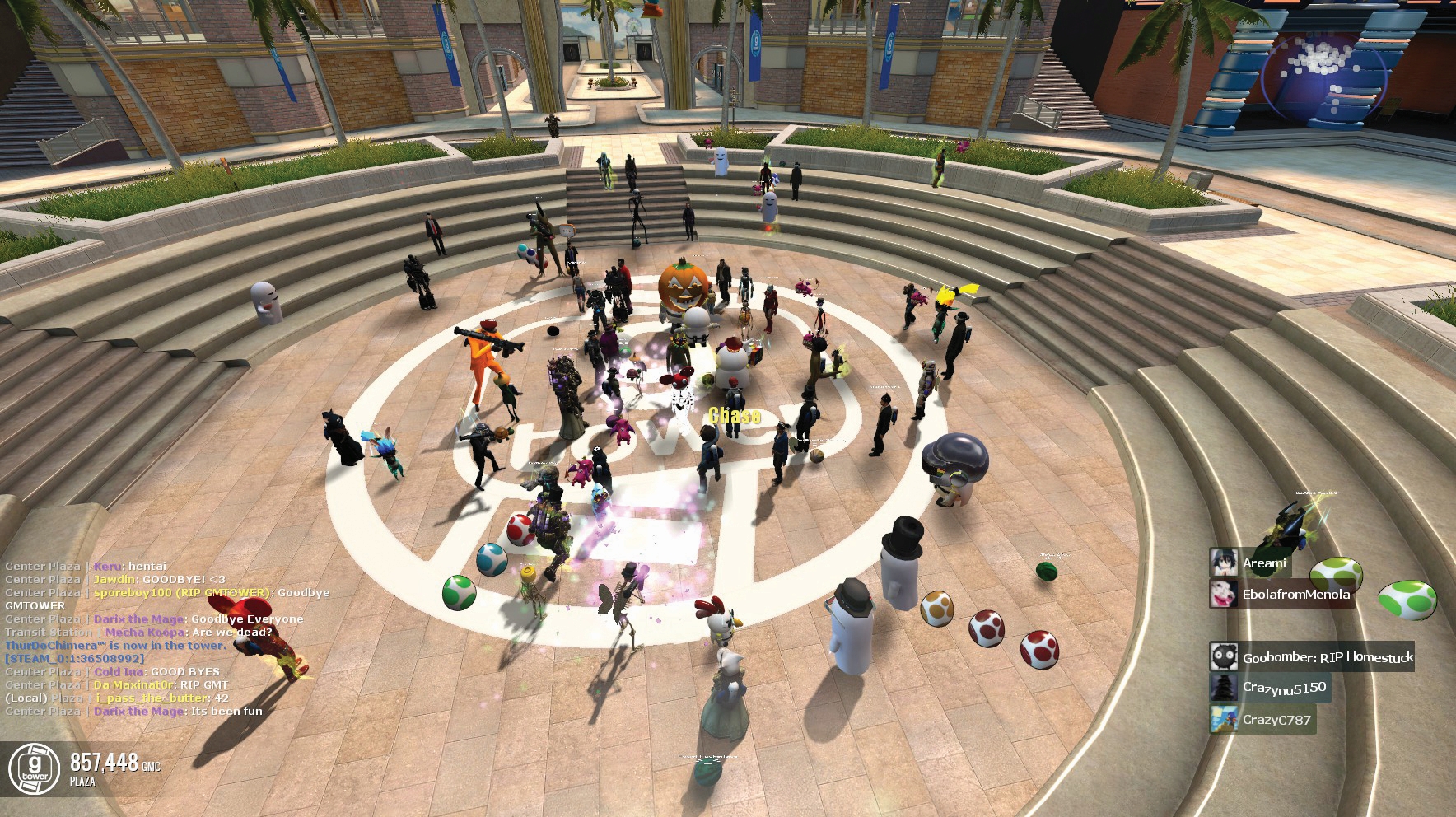The rise, fall and future of Gmod Tower
The story of one of the most ambitious user-created projects ever undertaken in Garry's Mod.

This article was originally published in PC Gamer issue 298. For more quality articles about all things PC gaming, you can subscribe now in the UK and the US.
There’s never been anything quite like Garry’s Mod, and I’d hazard a guess at there never being anything like it ever again. It’s a mod of the Source engine, made to enable just about anyone to build, pose or simply mess around with its tools and tricks. It’s a freeform sandbox designed to let you do whatever you want.
At least, that’s it at the base level. On top of making it easy for players to toy around, it also gives modders a framework to work on new, often absurd ideas. Entirely original game modes have been created in Garry’s Mod, short films have been made with it—using players as actors, or utilising complex stop-motion techniques. And it’s one of the most popular games on Steam. It celebrates its 10th birthday this month, and, as of January this year, has sold 10 million copies.
Since its release in 2006, Garry’s Mod has grown into a hub for a host of other games and weird concepts, primarily developed by fans and small teams. There’s one, though, that really took the cake in its size and ambition: GMod Tower. First publicly available in July 2009, GMod Tower had one primary aim: to create a large social space within Garry’s Mod where people could chat, play together, and generally create a community that would accommodate and welcome anyone. A hotel-style lobby for people to meet and chat, with the capability for the infinite rooms of an endless hotel tower.
It was developed by PixelTail Games, a group based in Washington, but brought together contributors from around the globe.
A team of four, working under the names MacDGuy, Mr Sunabouzu, Nican, and AzuiSleet, were the ones that worked on the first public release of GMod Tower, after some years of people dropping in and out of the project. It was one of the most ambitious things ever made in Garry’s Mod, and was greeted with the success that sort of ambition often warrants. Mere hours after release, GMod Tower’s website hit two million views. It was far too popular—so much so that Garry’s Mod’s server limit was upped by its developers just to cope.

Featuring at launch a couple of minigames, a mode akin to Half-Life Deathmatch: Source and another not dissimilar to Super Monkey Ball, the mod was already fleshed out. There were even movie nights: players could get together and watch streamed videos while hanging out in the tower’s lobby.
Keep up to date with the most important stories and the best deals, as picked by the PC Gamer team.
Its popularity was perhaps one of GMod Tower’s many downfalls: it was a mod of a mod, made by a few fans that wanted to create something new. It didn’t have the support of a regular income through sales, nor the power of a massive development team. As 2011 rolled into 2012, GMod Tower shut down, closing its doors without any clear intention to return.
GMod Tower came back with a bang. Over time, the game grew to having seven individual modes wrapped inside the tower. From minigolf to a game inspired by Mother 3.
As with any social space that is shut down, closed, or built over, those who had enjoyed inhabiting it were left disappointed. In the Steam group for GMod Tower, users asked where it had gone. The development team were pretty quiet. One Steam user summed up the prevailing mood, saying simply, “I want to play again in gmod tower :(”.
Then, in April 2012, GMod Tower returned almost out of nowhere, with a host of updates. Almost like a version 2.0, it arrived to a fanfare from those who missed their hub, their place to talk. It did come with a caveat, however: it had not been profitable or sustainable for some months. Hosting the servers was costly, and the team didn’t want to rely upon microtransactions or adverts to fund it.
And yet, GMod Tower came back with a bang. New features, a new and improved lobby map, and more. Over time, the game grew to having seven individual modes wrapped inside the tower. From minigolf to a game inspired by Mother 3, PixelTail Games remained committed, and the players recognised that, rewarding it with their love and support.

With its re-release, the initial core ethos was reinforced: this was to be a social hub. Be nice, friendly, and kind, and you were welcomed with open arms into GMod Tower.
What distinguished GMod Tower from many other projects with similar ambitions to be welcoming to all, regardless of who they were, was that it worked, and it worked tremendously. The vast majority of stories from players are of a positive community.
For the game’s fifth anniversary, in 2014, the developers held a small raffle. There was one requirement for entering: you had to tell a story of your experience in GMod Tower. Some of these stories were short and over in just a couple of sentences, but many were filled with emotion and love. Over a hundred people told lengthy stories of their experiences, archived on the game’s forums.
People were naming the many friends they had made, even partners they met through it. GhostDj told of how an admin changed everyone’s player models to dogs for an evening, and they ran around barking like one big pack. Boltaction17 said they managed to get over 20 people to dance to The Safety Dance by Men Without Hats, and it just made them happy to see everyone coming together for something so fun and silly. One user, Davem322, simply ended their story with “We are a group. We are brothers and sisters. We are the Gmod Tower.”
Over the years, PixelTail Games finished off a couple other projects in Garry’s Mod, from a horror map called Gm_Apartment to Elevator: Source, the one true elevator simulator. But behind the scenes, they were working on something new. Something beyond GMod Tower: Tower Unite.

A standalone release, Tower Unite would move the concept on from Garry’s Mod, and onto its own two feet, the idea being to create an entire game that encapsulated the ideals upon which GMod Tower had been built.
Once Tower Unite was released on Steam in Early Access, however, GMod Tower had to go down. PixelTail Games couldn’t host both games, and Tower Unite was now their sole project. There were no official tools ever released for hosting your own tower—the only way to play was through the official server. That meant that once PixelTail Games took their server down, that was it for the original GMod Tower.
I spoke to Macklin Guy, the founder of PixelTail Games, about GMod Tower, and moving on. As for why the company had to do so, “the Source engine and Garry’s Mod itself limited us our creations and ideas,” Guy told me.
“It was a constant battle for us. We knew we had to expand past being a mod when we had to take advantage of undocumented features of Source’s level format just to get it running. A good chunk of the things we have done (and continue to do) in Tower Unite would never have been possible in Garry’s Mod.”

On top of being a force for good in the community, GMod Tower meant a lot to the development team working on it, too.
“The project fostered countless connections made by the community across the world. This had a massive effect on the lives of all of us. People would log on daily just to hang out with their friends.”
Guy even met his wife on GMod Tower. They’ve been happily married for a year and a half.
“Tower brought a lot of people together. Just being a small part of that has had a huge impact on all of us and is one of the catalysts that drives Tower Unite forward.”
The tower closed down in April 2016, after just under seven years serving as Garry’s Mod’s largest social space. The PixelTails Games team said their goodbyes too, through a video reminiscing about everything that had gone on in the tower. There is no longer a way to play GMod Tower. While all the relevant files are available on the Steam Workshop, without the server it’s impossible to play as intended. The customisation systems are gone, game modes no longer function, and, most importantly, there’s no one around.
Every map is now a ghost town, a set of what once was in GMod Tower, a relic of the stories told by those who were there. Without the chatter of people having conversations around the place, the lounge is eerily quiet.

Many people who played GMod Tower have moved on to Tower Unite—it picked up over $73,000 in an Indiegogo campaign, and has received regular updates since entering Early Access. It’s distinctly similar to its predecessor, but Tower Unite also has its differences: it’s not a part of Garry’s Mod, and so lacks that infinitely wide variety of players to join in on the fun.
Because of that, those previous stories are being left behind, but that’s so that others can create their own—so that a social space like this can flourish on its own. GMod Tower, like Garry’s Mod itself, might well be a flashpoint in games, never to be recreated in the same way again. While other social games have found success, the broad and absurd appeal of Garry’s Mod meant millions of players could be introduced to a hub that would welcome them.
It’s still fun to walk around that ghost town, and find the places where those stories took place. The roof where someone was going on a wild goose chase for an item, the cinema where people gathered to watch funny videos, or the fountain where players waved goodbye to the tower.
I don’t think anyone will ever recreate GMod Tower; the stars aligned to make it such a welcoming place. But it’s heartwarming to look around the place that made so many people—of all creeds, cultures, and types—happy. You can’t call GMod Tower abandoned: it simply moved on. But the patch of virtual ground it was built on will remain special.

